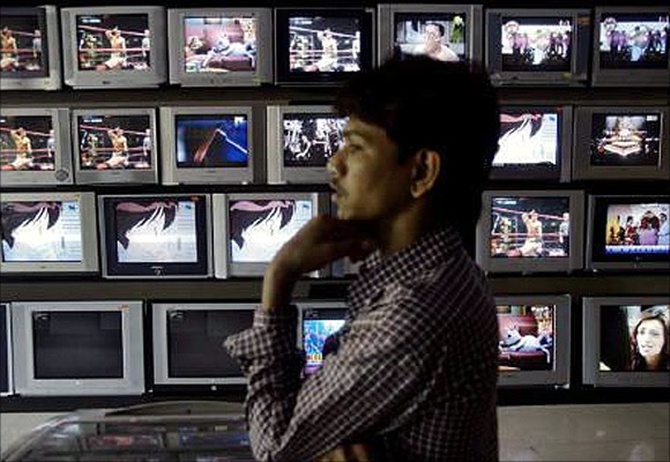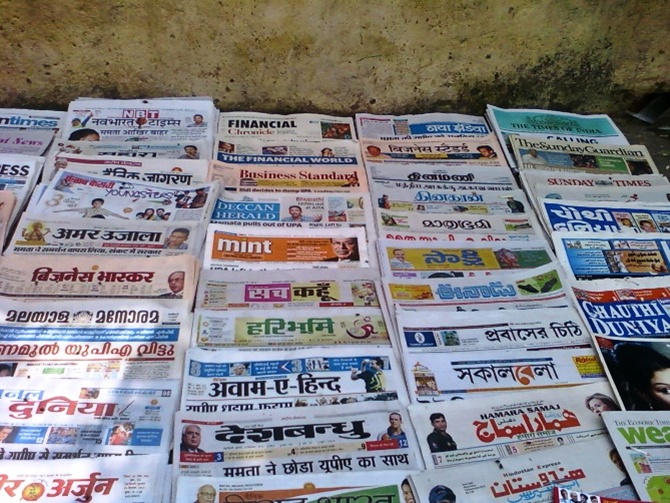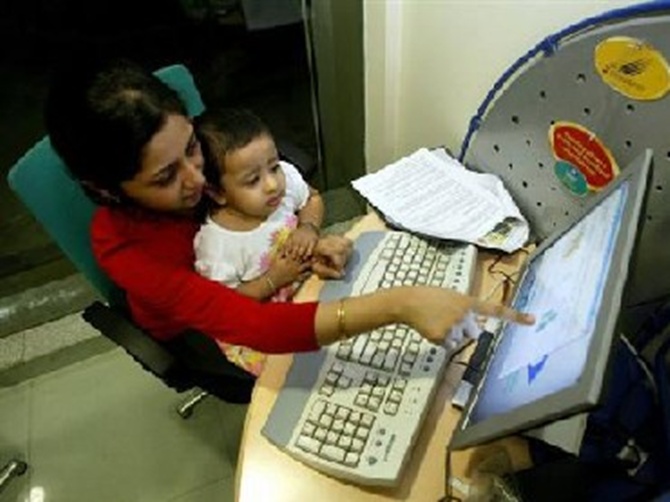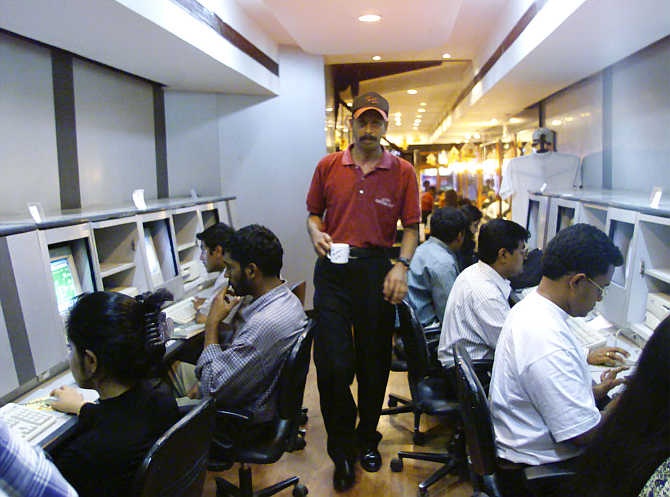Photographs: Reuters Vanita Kohli-Khandekar
When is the last time you saw a list that compared the top 10 online news or entertainment destinations with simple details such as reach and time spent, asks Vanita Kohli-Khandekar.
Why is it so difficult to measure online media? It is an old question. But analysts, investors and media researchers are raising it with increasing urgency.
In March 2014, about 325 million Indians were online, either through a hand-held device (phone, iPad and so on) or a computer/laptop.
The figure is based on numbers the Telecom Regulatory Authority of India released last week.
That figure is impressive. It is close to the 351 million people who read a newspaper and is just under half the 800 million people who watch television in India.
The advertising money spent on online media is growing three times the industry average. In 2013, it hit Rs 3,000 crore (Rs 30 billion).
…
No reliable data available on online media
Photographs: Reuters
Add pay revenues - the money you spend on ringtones and streaming music et al - and the total money spent on online media is well over Rs 5,000 crore (Rs 50 billion).
It goes beyond the numbers though. The rise of the internet is finally hitting English newspapers.
Their readership grew by less than one per cent in the last available survey. Based on revenues, Google's YouTube is probably among the larger broadcasters in India.
Online media is changing the status quo within the Rs 83,000-crore (Rs 830 billion) media and entertainment industry, and becoming critical for growth.
Why, then, does it lag TV and print in one key area - metrics?
...
No reliable data available on online media
Photographs: Reuters
Try researching online media - and I have been doing this for over a decade - it is difficult if not impossible to get numbers that help you analyse, compare or take even a half-decent look at what is happening within online, much less compare it with TV or other media.
When is the last time you saw a list that compared the top 10 online news or entertainment destinations with simple details such as reach and time spent. These are standard in TV, print or other media.
Much of the numbers on what consumers are doing online are a closely guarded, quasi state-secret. For example, if you want to compare The Times of India to a Hindustan Times and Yahoo!, you will have to source the numbers from each firm separately.
…
No reliable data available on online media
Photographs: Reuters
Each of them will give you numbers from Google Analytics, a tool that almost every online firm uses to measure what users are doing on their site. But this doesn't help an advertiser or planner who wants to invest money in online.
The numbers are not strictly comparable, because each firm has different parameters to define different things.
You could then go to comScore or Nielsen, the two main sources of online media metrics globally, both with different methodologies. comScore gives comparisons on everything from reach and consumption patterns to geographical trends.
...
No reliable data available on online media
Photographs: Reuters
But it does not, yet, include mobile devices in its sample. Given that two-thirds of the total online population in India is on hand-held devices, this makes the data inadequate. (comScore claims that its next round of data due in August will fix that.)
For a medium that is now almost two decades old, completely mainstream and bigger than radio or outdoor, why has it not got its act together on metrics? And why do advertisers continue to spend on digital?
Arpita Menon is executive vice-president and head of media planning and buying at Star India, a large spender on digital advertising. She reckons that one reason for growth is the whole "gung-ho ness about online".
The other is the fact that "agencies are not really 'non-aligned' when it comes to digital.
The kind of detailed evaluation and monitoring that happens of every rupee spent on TV doesn't happen with online."
…
No reliable data available on online media
Photographs: Reuters
This is because commissions on planning and buying of digital media are four times that of print or TV. "There is this drive to push digital without much attempt to make it measurable," says Menon.
She points out there is no evaluation of an integrated (internet plus mobile) plan, nor is there third-party monitoring of what money spent online has achieved for a brand.
This goes against the popular notion that online is transparent. It is transparent, but only for the brand itself. So a Yahoo! can look at all sorts of data on its performance. But unless this data is shared and compared across online brands, it is of little use to advertisers.
In spite of their problems, both readership and TV ratings have done a world of good for print and TV.
They were born when industry bodies - Media Research Users Council for print and the Joint Industry Body for TV - got together and agreed on the basic parameters for measuring audiences and on what to pay for such services.
…
No reliable data available on online media
Photographs: Reuters
Why then is the Internet and Mobile Association of India, or IAMAI, unable to get around this issue?
Shubho Ray, president, IAMAI, lists three hurdles. One, within the IAMAI's 200 members, there is no clear agreement on the parameters for devising metrics. Two, the industry is very dynamic.
One new app or a social media site upsets the whole apple cart on what should be measured and how.
Three, most of the firms within the industry are chary of allowing server tagging, critical if any research firm wants to take data from a company that operates online.
Once online media spend reaches 15-20 per cent of the total ad pie, against the current figure of less than 10 per cent, marketers will question them harder.
That is exactly what happened with TV and print. Maybe that is when IAMAI will finally find online publishers, agencies and spenders willing to get together to agree on standards that help measure what consumers are doing online.
Till then, it will continue to grow on goodwill and good commissions.









article